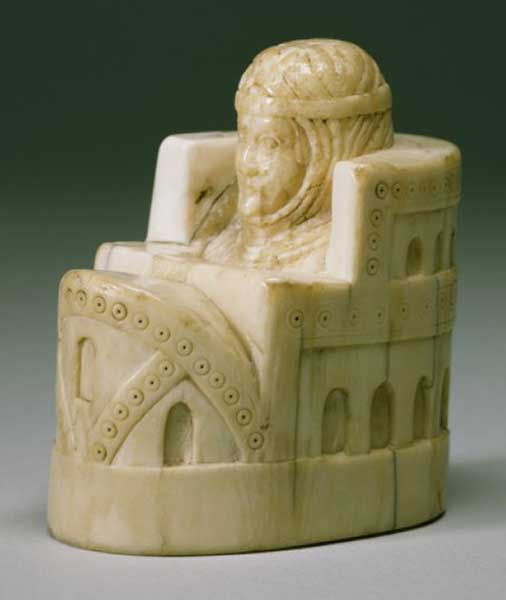Chess pieces can be collectible in their own right. A chess set consists of 32 pieces, 16 on each sides. Normally they are black and white but sometimes they can be in other colors such as red and white or made of other materials such as ivory or precious metals.
On each side there is a king, a queen, two knights, two bishops, two rooks and eight pawns.
Below are some examples and price guides of some chess pieces including a Scandinavian king from the 12th century and a parcel-gilt silver knight chess piece.

A ‘PAWN’ CHESS PIECE BY MARTIN BROTHERS unsigned, circa 1900 glazed stoneware 8cm high
Sold for £ 1,530 inc. premium at Bonham’s in 2019

This chess piece of a queen seated inside a castle is modeled on similar pieces made in the Arab world in the 8th and 9th centuries and brought to western Europe as gifts or articles of trade. The queen’s headdress, a close-fitting hood with headband, is typical, though, of royal garments worn in 12th-century Spain. The piece is carved from a walrus tusk, used as a cheaper alternative to elephant ivory. This is the only medieval chess piece of a queen in an American collection.
Reference: The Walters Art Museum

A parcel-gilt silver and ivory chess piece (knight), unmarked, probably Hanau, circa 1900 resting on a rectangular terrace adorned with a double-headed eagle escutcheon stamped with a count coronet, surrounded with foliage and lion’s muzzle, the horse adorned with ceremonial armor inlaid with cabochons of colored stones, the knight with ivory face wearing a dragon crested helmet
Sold for 8.190 EUR at Sotheby’s in 2020

Chess piece Scandinavian (possibly Denmark)Medievalearly 12th centuryObject Place: Scandinavia (possibly Denmark)
This king is perhaps the only remaining piece of an unusually elaborate early Romanesque chess set of walrus ivory. The figure is seated in a high-backed throne and holds in his right hand the hair of a warrior in mail who stretches out in submission. The throne back is decorated with intertwined dragon-like beasts, one of which is biting the warrior’s behind. The decoration on the left side of the throne is missing, but one can assume that it continued to the back and right around the throne. The iconography may allude to Sigurd overcoming the wicked Regin, a favorite theme in Norse poetry, or may represent the conquered monsters of the netherworld. The intricate carving with its free and restless rhythmic motion recalls the style of the incised drawings on the earlier Viking tombstone on the Isle of Man and the Swedish runestones of Sparlosa and Ramsund, 3 which depict the story of Sigurd and Regin.
Reference: Museum of Fine Arts Boston

Knight Chess Piece ca. 1250 British
Although the number of Knights and Bishops on the chessboard is the same, more medieval chess pieces in the form of Knights survive. This example, perfectly poised on his fine horse, battles a dragon, a symbol of evil. But for the lack of a halo and a princess in need of rescue standing nearby, he might be mistaken for Saint George, who, according to legend, slayed a dragon.
Reference: The Metropolitan Museum of Art


